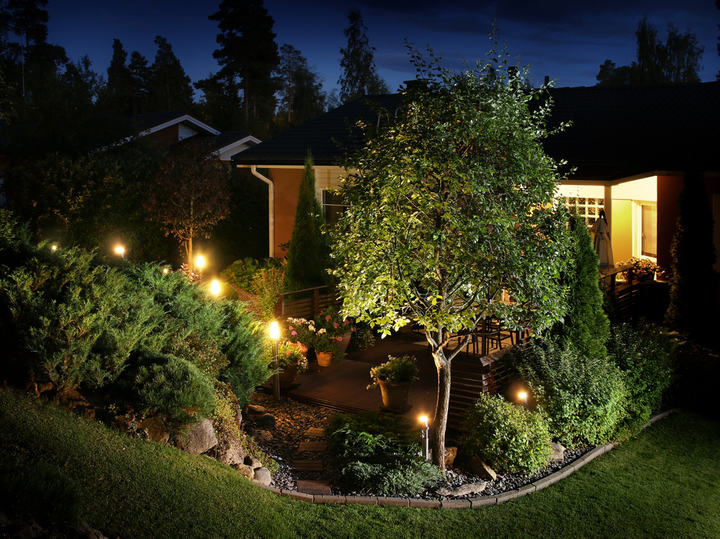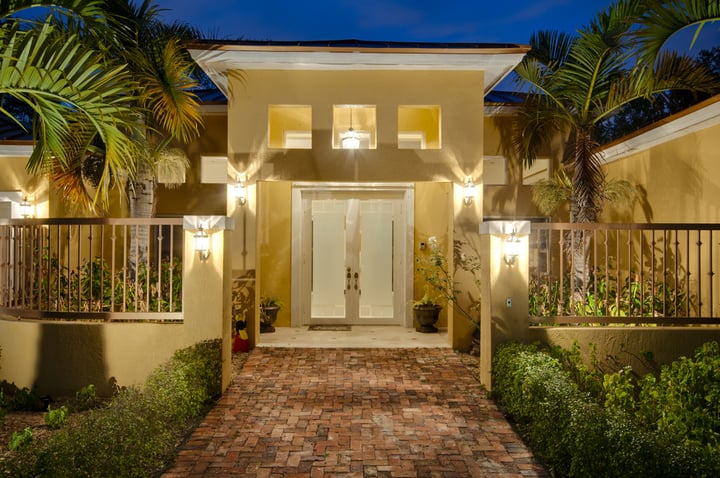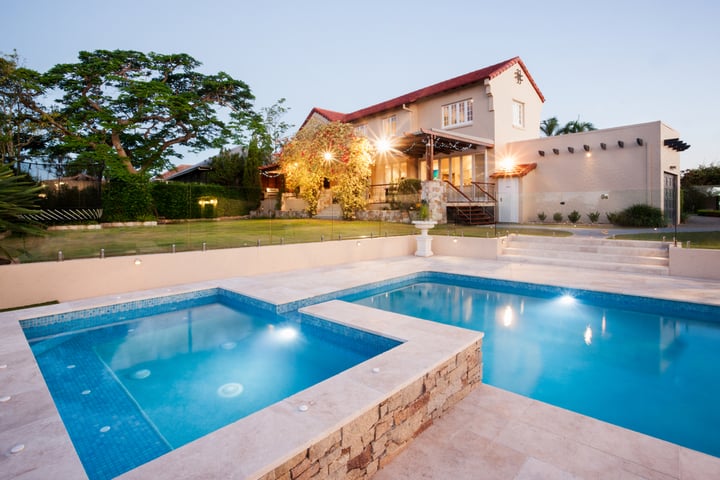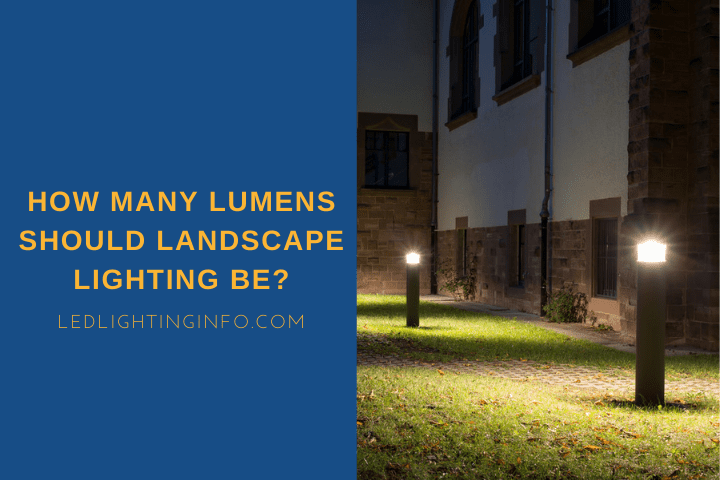Setting up an intricate landscape lighting set up that then disappoints due to the lights being too dim is super-annoying.
At the same time, you don’t want to turn your garden into some kind of beacon that may confuse passing planes looking for a runway.
So, you must get the balance right with your choice of lights for your outdoor space and pick the right luminosity bulbs and lights for the job.
Pathway lights should be 100 – 200 lumens, though more lights with lower lumens are better for any steps. Porch lights should be brighter at 300 or more lumens, while underwater lights need to be 200 – 400 lumens. The bigger the area to light, the brighter the lights must be.
Let’s explore the options a little more as I break down:
- How bright various landscape lighting types should be
- Lighting pollution regulations that you should be aware of
Brightness Of Various Landscape Lighting

There are many different types of landscape light that you could add to your home, and they’re all different.
They don’t just exist to look pretty, but instead have specific roles within your outdoor space.For that reason, you need to find the right brightness for each lighting type.
I’ve picked out three of the most popular types of light to delve a little deeper on:
Path Lights
Path lights serve an important purpose in keeping you safe at night.
They make sure you can see where you’re walking so that you don’t trip or snag your foot on an uneven section.
At the same time, pathway lights tend to be relatively low to the ground, so they don’t need to be mega-bright.
Most people don’t want to feel like they’re on the catwalk as they arrive home.
With that in mind, it makes sense to aim for between 100 and 200 lumens for each of your pathway lights.
If your path is nice and level with no bumps or uneven areas, you can aim for the lower end, but go brighter and choose 200-lumen lights if you want extra safety.
This advice changes if you’re lighting a stairway outdoors.
Lights can quite easily cast shadows which can obscure the ends of steps, making them harder to walk up or down.
Instead, it’s better to add more lights to provide better overall coverage, aiming for 30-50 lumens per bulb to compensate.
Porch Lights

It will depend on how big an area you’re lighting and how many lights you want to use with porch lights.
However, you will want something brighter than you would for path lights.
That’s because the area tends to be larger, and the lights are higher.
Porch lights are another safety feature since they help you navigate your home quickly and easily. In addition, they can deter any intruders who get too close.
If you’re using one or two lights for your porch, then aim for up to 700 lumens per bulb.
If you have multiple downlights then around 300 lumens each should suffice.
Underwater Lights

Adding underwater lighting to a pond can really help it to look incredible. However, these lights are normally much more focused on the aesthetic.
However, technically having the pond illuminated will make it safer if you walk in the garden at night and don’t want to get wet.
Water will obscure the light, so you need something brighter than pathway lights.
Although some diffusion is good – you’d rather have the water illuminated evenly than clearly see a couple of bright spots under the surface.
So, aim for between 200 and 400 lumens for underwater lighting.
Also, if you have any fish in your pond, use a timer to make sure the lights are switched off at night once you’re asleep.
Generally, most fish species are OK with lights, but they need a day/night cycle for their health.
All landscape lights – recommended luminosity
Here’s a guide to the various types of landscape lighting you may want to install and the brightness you should be looking for.
| Type of light | Brightness (lumen) |
|---|---|
| Pathway lights (no stairs) | 100-200 |
| Pathway lights (with stairs) | 30-50 (with more lights) |
| Decking spotlights | 30-50 |
| Porch lights | 300-700 |
| Atmospheric lights highlighting a shrub or small feature | 50-100 |
| Atmospheric lights highlighting a tree or larger feature | 200-300 |
| Safety floodlights | 700-1300 |
| Underwater lights | 200-400 |
Light Pollution Regulations

Depending on where you live in the world, you may need to check your local light pollution laws to make sure your landscape lights aren’t too bright.
Generally, most laws state that you can’t shine any bright light that may be visible from someone else’s home and cause them a nuisance.
Most landscape lighting, such as pathway lights, won’t be an issue since they aren’t bright and are directed towards the ground.
It’s the same with porch lighting – they should be angled downwards and ideally recessed so that the bulb isn’t visible if you’ve chosen a bright one.
Underwater lighting should be fine since the water should diffuse the brightness and prevent it from being annoying for those living next door.
With atmospheric lights and floodlights, you need to be more careful.
Floodlights are probably the brightest lights you’ll use outdoors, while atmospheric lights don’t tend to be pointed at the ground.
If you’re lighting a tree or shrub, make sure you do so in a way that doesn’t cast the light (and shadow) onto another property.
Any flood lights should be directed only towards your garden or driveway space angled downwards.
Related: How To Space Out Landscape Lighting?
Final Words
Work out which lights you want to choose for your landscape lighting project.
As long as you follow these guidelines, you should have the right brightness level for your home.
You won’t need to go to the expense of replacing them immediately.
One option would be to choose dimmable garden lights, letting you set the brightness level once everything is set up.
That way, you’d be guaranteed to have the ambiance you wanted. Just be careful of any light pollution regulations local to you.
Let me know if you’ve got any questions about choosing the right lights or tips from your own installation.

